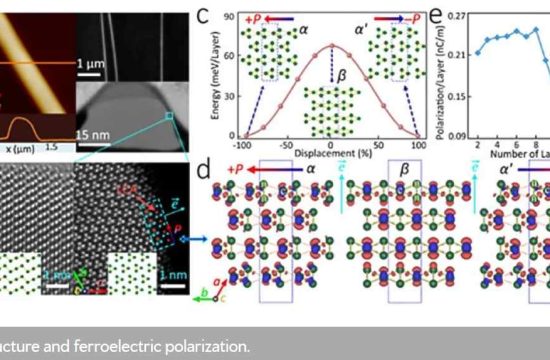A research group, at the Osaka Metropolitan University Graduate School of Engineering, has succeeded in measuring spin transport in a thin film of αNPD molecules—a material well-known in organic light-emitting diodes—at room temperature.
They found that this thin molecular film has a spin diffusion length of approximately 62 nm, a length that could have practical applications in developing spintronics technology. In addition, while electricity has been used to control spin transport in the past, the thin molecular film used in this study is photoconductive, allowing spin transport control using visible light.

Information processing devices—such as smartphones—are becoming more sophisticated because their information recording density constantly increases, thanks to advances in microfabrication technology. In recent years, however, the physical limits to processing are rapidly approaching, making further miniaturization difficult. Perhaps, though, the continued demand for more sophisticated technology requires a fundamental change in operating principles, so that faster, smaller, new devices can continue being made.
To meet this demand, a technology called spintronics—using the magnetic spin and the charge of electrons—is attracting attention as a key technology, that could unlock the next generation of advanced electronics. By aligning the direction of a magnetic spin and moving it like an electric current, it is possible to propagate information using very little power and generate less waste heat.
A research group, led by Professors Eiji Shikoh and Yoshio Teki of the Osaka Metropolitan University Graduate School of Engineering, has successfully measured spin transport, at room temperature, in a thin film of alpha-naphthyl diamine derivative (αNPD) molecules, a well-known material in organic light emitting diodes. This molecular thin film was found to have a spin diffusion length of approximately 62 nanometers, a distance that they expect can be used in practical applications.
To use spin transport to develop spintronics technology requires having a spin diffusion length in the tens of nanometer range at room temperature for accurate processing. The thin molecular film of αNPD with a spin diffusion length of 62 nanometers—a long distance for molecular materials—was fabricated for this study by thermal evaporation in a vacuum. While electricity has been used to control spin transport in the past, this new thin αNPD molecular film is photoconductive, making it possible to control spin transport using visible light.
“For practical use, it will be necessary to uncover more details about spin injection and spin transport mechanisms through thin molecular films to control spin transport,” noted Professor Shikoh. “Further research is expected to lead to the realization of super energy-efficient devices that use small amounts of power and have little risk of overheating.”
The research results were published in the online bulletin of Solid State Communications on December 8, 2022.








